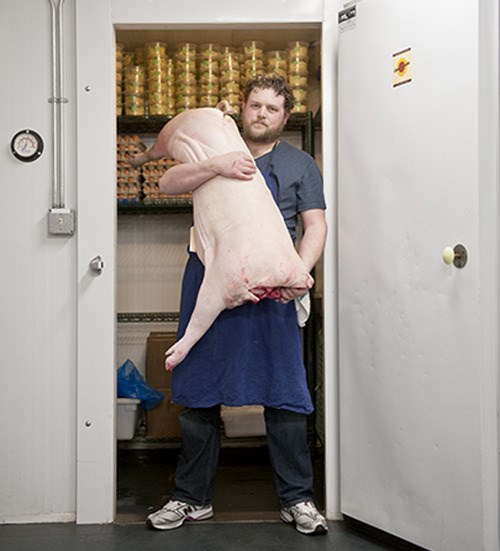Every Thursday morning at Campagnolo on Main, two entire pig carcasses, fresh from a local farm, are brought in through the back door. The hogs will be quartered by chef Ted Anderson in what is called The Cure, the restaurants in-house butchery.
Nothing will be wasted. Every part of the animal, or at least 95 per cent, goes into a different bin to be processed into hams, salamis or sausages that will be aged for weeks, or months, in a curing fridge. Other cuts will go to making dishes or headcheese and patés in the Italian fashion. Lesser parts will go into hour-long simmering stocks that will provide the base for many dishes.
A new idea? Not quite. Proper butchery goes back to the dawn of time in Europe, when few could afford to waste any part of farm animals that were reared for consumption. Pretty much every bit of a cow, sheep, pig or fowl that had given its life to feed humans was used, giving birth to delicious recipes.
In modern restaurants, wouldnt it be less labour intensive, and faster, to order the cuts as needed from wholesale providers? Why go through quartering two 200-pound animals, a full day of work every week?
The answer may be artisan pride. Perhaps, more importantly, knowing the product in its basic form, then transforming it into an eye-pleasing, tasty dish, creates for the chef a deeper connection and commitment to the food.
An apostle of this return to restaurant butchery, Anderson says, We try to mentor this skill among young cooks. The length of the butchery course offered in some chefs school is just one day.
On a recent evening, while patrons were graciously greeted at the door by host Giovanni Giardino, dishes of fun complexity or apparent simplicity would appear at diners tables, sometimes surprising, always delightful.
Deliberately focusing on the pork in the menu, we ordered the salumi platter, a selection of prosciuttos and salamis that opened the way to a salad of octopus paired with dry cured ham. This provided a delicious example of chef Andersons understanding of complementary textures, and how he excels at playing tastes off one another. Then came a tagliatelle with a ragout of pork coddled with a parsnip purée in a wine sauce. A delicate leaf of fried kale provided a fun touch.
Giardino, a superb sommelier, suggested a Rosso from the Veneto that complemented our main course like a true love story. An exquisite rice pudding with white chocolate and stewed cherries was an unrepentant, self-indulgent finale.
As for the pigs that gave their lives for such a dinner, one hopes they know their sacrifice was both respected and honoured. If hog heaven exists, Anderson offers an excellent interpretation of what it should look like



